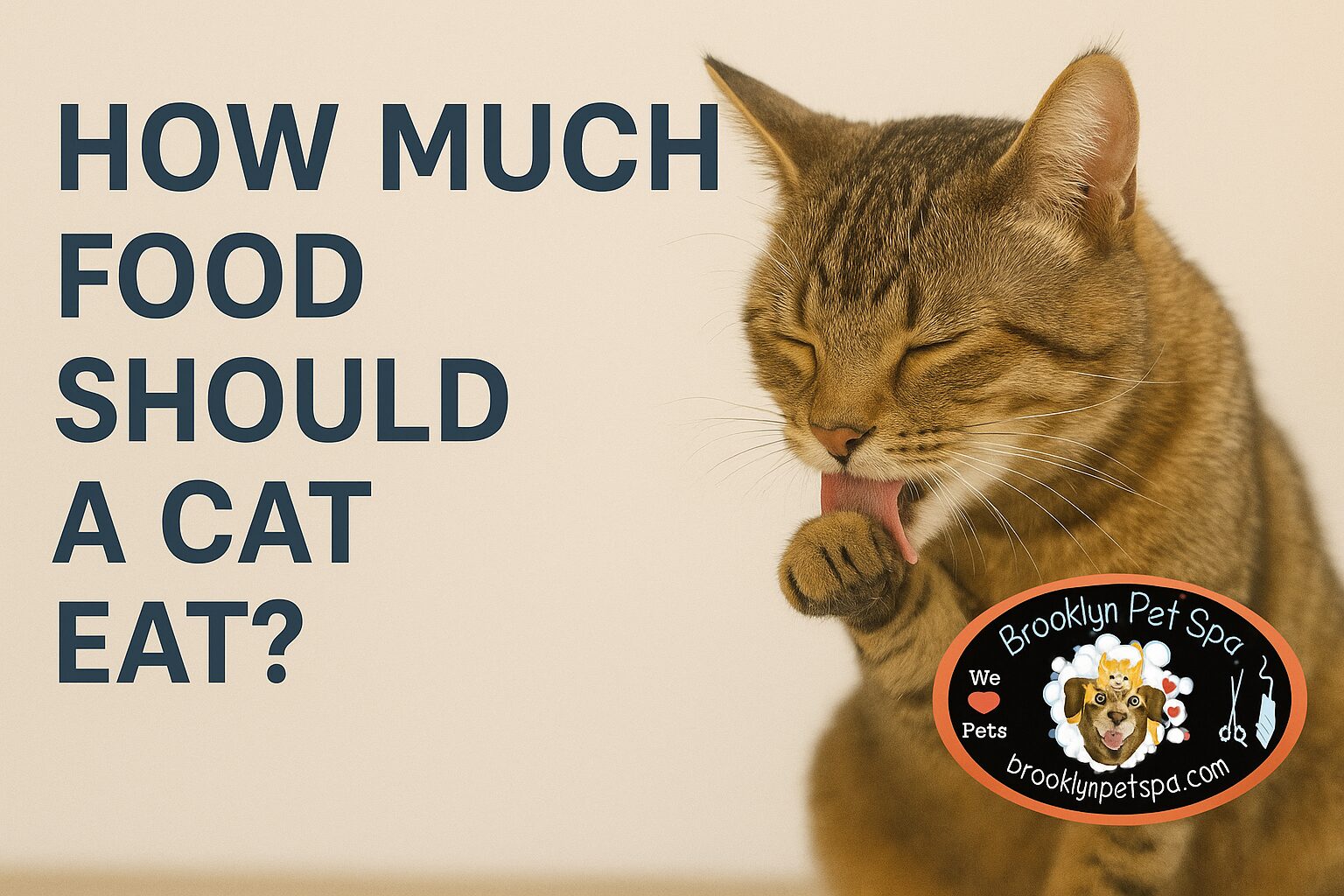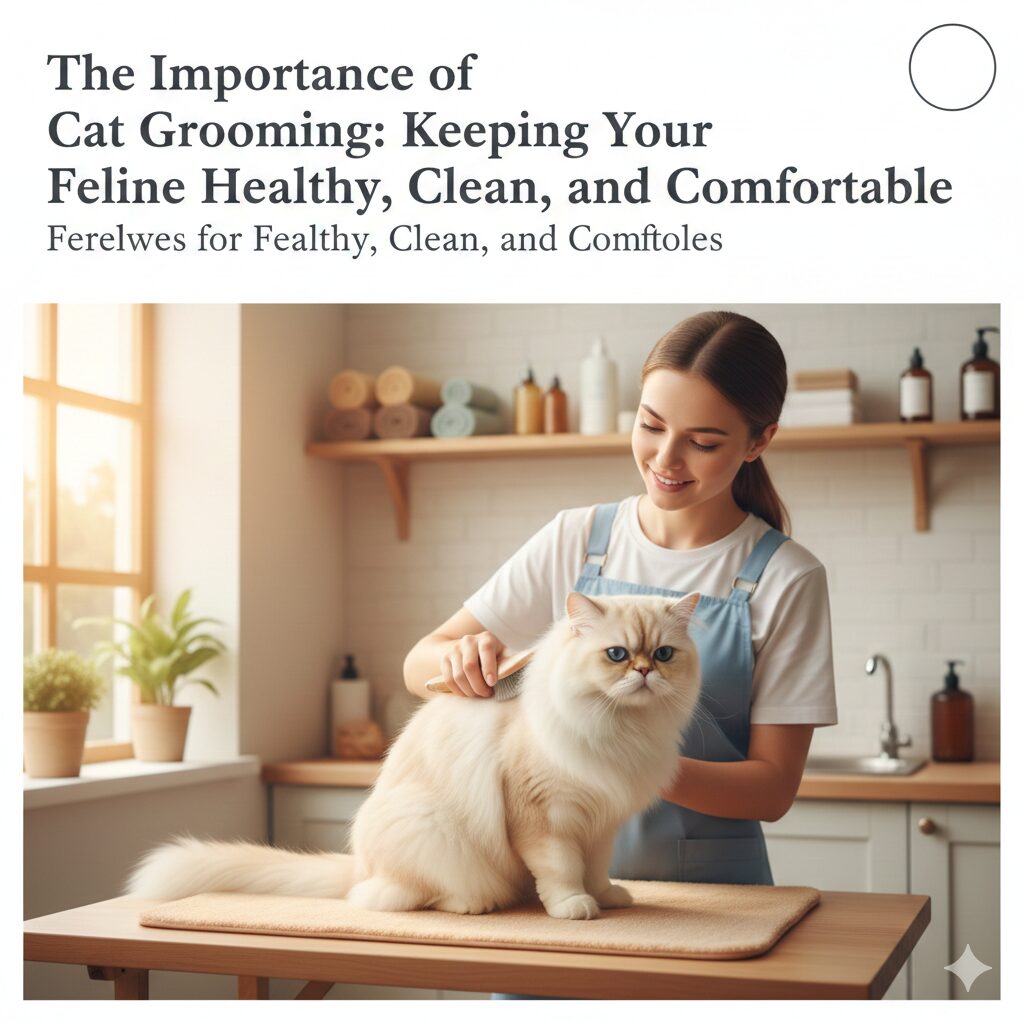Feeding your feline friend the right amount of food is one of the most important parts of responsible pet care. Whether you’re a new cat parent or a long-time owner, it’s natural to wonder, “how much food should a cat eat?” Getting this right helps your cat maintain a healthy weight, stay active, and avoid common health issues.
Let’s dive into everything you need to know about feeding your cat — from portion sizes and meal frequency to the type of food that suits their lifestyle best.
Table of Contents
ToggleUnderstanding Your Cat’s Nutritional Needs
Before figuring out how much food should a cat eat, it’s essential to understand what cats need nutritionally. Cats are obligate carnivores, which means they require animal-based proteins to survive. Their diet should include a balance of proteins, fats, and a small amount of carbohydrates.
A cat’s nutritional needs depend on factors such as:
-
Age – Kittens need more calories to support growth.
-
Weight – Overweight cats need smaller portions.
-
Activity level – Active cats burn more energy than indoor cats.
-
Health condition – Cats with medical conditions may need specialized diets.
If you’re ever unsure, your veterinarian can recommend a feeding plan that fits your cat’s unique needs.
How Much Food Should a Cat Eat Daily?
The answer to how much food should a cat eat depends on whether you feed dry kibble, wet food, or a mix of both.
For dry food, an average indoor adult cat weighing around 8–10 pounds typically needs about 1/3 to 1/2 cup per day, split into two meals.
If you feed wet food, one 3-ounce can per 3 to 3.5 pounds of body weight daily is a good general rule. However, wet food has higher moisture content, so you may need to adjust based on your cat’s appetite and energy level.
Cats that are particularly active, such as outdoor cats or playful breeds, may require slightly more calories to maintain their weight.
Balancing Treats and Regular Meals
Even though treats can make your cat happy, they shouldn’t exceed 10% of their daily calorie intake. Too many treats can lead to obesity or nutritional imbalance.
When you’re thinking about how much food should a cat eat, always include treats in your total calorie count. Choose healthy, high-protein options instead of high-carb snacks, and avoid giving human food — especially onions, garlic, or chocolate, which are toxic to cats.
Meal Timing and Portion Control
Most cats do well with two meals per day, spaced about 12 hours apart. Kittens, however, need smaller, more frequent meals because of their high metabolism.
It’s a good idea to measure portions using a standard measuring cup instead of free-feeding, where food is available all day. Measuring ensures you know exactly how much food should a cat eat, helping prevent overeating or weight gain.
Automatic feeders can also be a great solution for maintaining consistent meal times if you’re often away from home.
Monitoring Your Cat’s Weight and Health
The best way to tell if your cat is eating the right amount is to monitor their body condition. You should be able to feel, but not see, their ribs. A slight waistline should be visible when viewed from above.
If your cat is gaining or losing weight unexpectedly, adjust the portion size or consult your vet. Regular checkups are key to ensuring that your cat’s diet supports their long-term health and happiness.
At the end figuring out how much food should a cat eat isn’t just about following a chart — it’s about understanding your cat’s lifestyle, health, and preferences. A balanced, portion-controlled diet paired with plenty of water and love will keep your feline healthy and content for years to come.
FAQs About How Much Food Should a Cat Eat
1. How much food should a cat eat in a day?
The answer to how much food should a cat eat depends on its age, weight, and activity level. On average, an adult indoor cat needs around 1/3 to 1/2 cup of dry food or one 3-ounce can of wet food per 8–10 pounds of body weight daily.
2. How much food should a cat eat if they are overweight?
If your cat is overweight, it’s important to reduce calorie intake gradually. To know how much food should a cat eat, consult your vet for a specific feeding plan that supports safe weight loss without affecting nutrition.
3. How much food should a cat eat when feeding both wet and dry food?
When mixing wet and dry food, adjust portions accordingly. For example, if you give half the daily portion in wet food, reduce the dry food by half too. Keeping track of how much food should a cat eat ensures your cat gets balanced nutrition without overeating.
4. How much food should a cat eat based on age?
Kittens, adult cats, and senior cats have different nutritional needs. When determining how much food should a cat eat, remember that kittens require frequent, smaller meals, while adult cats do well with two meals per day.
5. How much food should a cat eat to stay healthy and active?
To keep your cat healthy and energetic, measure their meals and stick to a consistent schedule. Regularly checking weight and body condition helps you know if how much food should a cat eat needs adjusting for their lifestyle.








